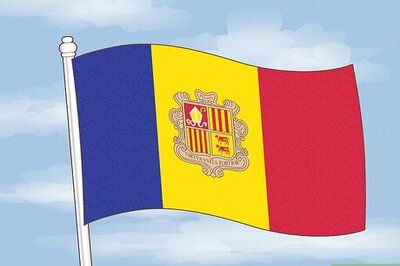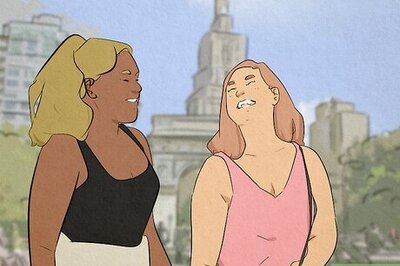
views
I am a trained medical doctor with a specialization in child health. I completed my MBBS from the Christian Medical College, Vellore in 1972, and completed studies leading to the award of the degree of MD (Paediatrics) of the Madras University, from the same institution in 1976. After this, I joined the faculty of the Centre for Social Medicine and Community Health at the Jawaharlal Nehru University in New Delhi and worked there for two years, before leaving to join a field based health programme at the Friends Rural Centre, Rasulia in Hoshangabad, MP. During the two years I worked there, I worked intensively in the diagnosis and treatment of Tuberculosis and understood many of the social and economic causes of disease. I was also strongly influenced by the work of Marjorie Sykes, the biographer of Mahatma Gandhi, who lived at the Rasulia centre at that time.
I came to Chhattisgarh in 1981 and worked upto 1987 at Dalli Rajhara (district Durg), where, along with the late Shri Shankar Guha Niyogi and the workers of the Chhattisgarh Mines Shramik Sangh, I helped to establish the Shaheed Hospital, that continues to practice low cost and rational medicine for the adivasis and working people of the surrounding areas upto the present. After leaving Dalli Rajhara, I worked to develop a health programme among the Adivasi population in and around village Bagrumnala, which today is in Dhamtari district. This work depended on a large group of village based health workers who were trained and guided by me. When the new state of Chhattisgarh was formed, I was appointed a member of the advisory group on Health Care Sector reforms, and helped to develop the Mitanin programme, which in turn, became the role model for the ASHA of the National Rural Health Mission. A copy of the Order of the Department of Health and Family Welfare of the Govt. of Chhattisgarh regarding my nomination to the advisory group mentioned above is attached. (Annexure 1.)
My work in the area of community health, as well as my work on Human Rights which is detailed below, has been nationally and internationally recognized. I have been awarded the Paul Harrison Award by the CMC Vellore in 2004; the RR Keithan Gold medal by the Indian Academy of Social Sciences in 2007; and have received the Jonathan Mann award for Health and Human rights from the Global Health Council in 2008. I am attaching notarized copies of the citations of these awards with this statement, and am carrying the originals for the perusal of the court. (Annexures 2, 3, 4 and 5)
I have been a member of the Peoples’ Union for Civil Liberties (PUCL) since 1981. The PUCL is an organization devoted to the preservation of constitutional civil liberties and human rights that was founded by the late Shri Jayprakash Narayan during the years of the Emergency. In Chhattisgarh, as well as in many other parts of the country, the PUCL led the campaign for the preservation of the freedom of speech, prevention of custodial violence, and for the public accountability of the police. I became General Secretary of the Chhattisgarh unit of the PUCL in 2004, and am currently the President of the State unit, and Vice President of its National body.
In Chhattisgarh, the PUCL has been in the forefront of exposing the atrocities of the police. Atrocities by men in uniform against vulnerable sections continue to be a serious problem in the state, as the front page news item in the “Sunday Times” dated 12th September 2010, annexed hereto as Annexure 6 shows. In this situation PUCL’s efforts were always directed towards the establishment of good governance and constitutional values. PUCL findings and investigations were always made available in the public domain through press releases and its own publications. One such Press Release reporting investigation into police atrocities in Village Jiramtarai, Thana Koylibeda is annexed hereto as Annexure 7. The report of one such investigation pertaining to police atrocities in Katgaon (Kanker district) was published in the “Navbharat” and “Deshbandhu” newspapers which are annexed hereto as Annexure 8and 9 respectively. A PUCL publication on the State of Human Rights in Chhattisgarh is appended to this statement. (Annexure 10). In this connection PUCL regularly corresponded with the National and State Human Rights Commissions. Copies of some of the letters sent to the PUCL by the National Human Rights Commission (collectively) and the State Human Rights Commission are attached to this statement. (Annexure 11 and 12)
Apart from investigating and documenting many cases of Human Rights abuse involving the police, the PUCL has acted as a whistleblower in the matter of exposing the true nature of the Salwa Judum. The Salwa Judum, which began in the Dantewada district in 2005, has been represented by the state government as a spontaneous peoples’ movement against the Maoists active in the area. However, an investigation led by the PUCL and involving several other Human Rights organizations revealed that it was in reality a state sponsored and state funded as well as completely unaccountable vigilante force, to which arms were provided by the government. The activities of the Salwa Judum have led to the emptying of more than 600 villages, and the forced displacement of over 60,000 people. Concerns regarding the activities of the Salwa Judum have been expressed by several independent organizations including the National Human Rights Commission. International organizations like the UNICEF have also voiced serious concern and have invited me to dialogue with them about the restoration of normalcy in the region affected by Salwa Judum. The Hon’ble Supreme Court has also, on several occasions, expressed its grave concern over the activities of the Salwa Judum and the deployment of armed vigilantes for the promotion of state policy. This has been widely reported in the press. A Table with an indicative list of agencies that have made critical observations on the Salwa Judum is attached (Annexure 13). A copy of the report on the Salwa Judum by the Chhattisgarh PUCL and other organizations (Annexure 14), and copies of the investigation reports on the Salwa Judum brought out by the Independent Citizens Initiative and Asian Centre for Human Rights are being filed along with this statement (Annexure 15 and 16 respectively). An invitation from the UNICEF, Chhattisgarh Regional Office to participate in a dialogue to seek a resolution to the crisis in Dantewada as a fallout of the Salwa Judum is similarly attached to my statement (Annexure 17).Press reports in the Hitavada, dated 23.10.2010 pertaining to the Hon. Supreme Court’s critical observations are attached (Annexure no 29), as are Certified copies of Supreme Court orders that make critical observations on the Salwa Judum are also being attached (Annexure 18)
The PUCL has also, during 2006, organized two major conventions, opposing the proposal to enact the Chhattisgarh Special Public Security Act, because it has been, and continues to be, our view that this Act contravenes the civil liberties assured to us in the constitution. I have expressed these views in the Press as well, and am attaching with this submission a copy of newspaper carrying a press report of such a convention (Annexure 19), as well as a copy of the newspaper “Chhattisgarh” dated 30th March 2006 in which my interview appears in this regard. (Annexure 20) A Civil Writ Petition (Writ Petition No 2163/2009) challenging the vires of the Chhattisgarh Special Public Security Act has been filed by the PUCL in the Chhattisgarh High Court. Certified copies of the Court orders admitting this petition and issuing notice are being filed along with this statement (Annexure 21).
For all the reasons mentioned above, the Chhattisgarh police and the state government have harboured a grudge against me, and the then DGP of Chhattisgarh, Mr OP Rathore, has gone on record threatening to take action against the PUCL and its office bearers. Copies of a newspaper of 3rd January 2006 carrying a report to this effect are attached to my statement. (Annexure 22)
I have been concerned with the rights of prisoners in my capacity as a Human Rights worker and was approached by the family of Mr Narayan Sanyal to look after his health and well being after he was brought to Raipur jail in 2006. My first visit to him in jail was in the company of his family and lawyer. Subsequently, I obtained permission from the police authorities for visiting him in jail, and visited him several times, each time applying to do so in my capacity as a PUCL office bearer. After my visits, I informed his family members about his condition over the telephone. During the course of these visits, it was brought to my notice that the surgery on his hands that was necessary for medical purposes, was being delayed due to communication problems between the jail and the doctors in the Raipur Medical College. I played a role in facilitating his surgery and kept his family informed about the process. During this period there was considerable correspondence between the prisoner’s family, jail administration and medical authorities, of which copies were marked to me. I attach along with this statement copies of the letter written by Mr Radha Madhav Sanyal (brother of Narayan Sanyal) to the Jail Superintendent with a copy to me (Annexure 23); copies of my applications to visit Mr Narayan Sanyal in jail which were obtained through an application under the RTI (Annexure 24); copy of the written permission given to me by Shri BS Maravi, Senior Superintendent of Police, Raipur (Annexure 25) and copies of the correspondence from the Jail authorities to the medical doctors mentioned above with copies marked to me (Annexure 26).
It was with similar concern for the situation of prisoners that I acted upon the letter received in the post from one Madanlal Barkhade about prison conditions in the Raipur Central Jail. I released his letter to the press in Raipur and attach the newspaper in which the aforesaid letter was published. (Annexure 27)
The documents seized from my house during the house search on 19.5.2007 were those of concern to me in the ordinary and transparent conduct of my work. Human rights organizations from all over the country used to send me books, pamphlets and documents, and there were thousands of these lying in my residence, which I also used as my office. None of the seized documents had been secretly or clandestinely obtained. Document No. A 19 was sent to me by post by Shri Govindan Kutty, Editor, Peoples’ March. Document no A 20, purported to be written by Madanlal Barkhade was similarly received by me in the regular post. The document A 21 was sent to me by Dr Kalpana Kannabiran, one of the authors of the article, then Professor at the National Law School Hyderabad, by e-mail. Article A 22, photocopy of a hand written document, and Articles A 23 and A 36 were available for distribution at a seminar on the Salwa Judum organized by the Nelson Mandela Centre for Peace and Conflict Resolution, Jamia Milia Islamia, New Delhi in January, 2007, to which I was invited , and were picked up by me there. Article A 24 was received by me in the post. Newspaper clippings A 25 to A 35 are newspaper clippings that I had maintained in furtherance of my interest in the emerging situation in Chhattisgarh.
Several policemen in the search party were involved in the process of the search at my house. Having found a document, the person finding it would hand it over to Mr Rajput. Mr Rajput would first read it, and then hand it over to me for my signature. He would also sign it himself. After we had both put our signatures on the document, he would dictate to TI Jagrit what was to be written in the seizure memo. Mr Jagrit would then make the entry, following which Mr Rajput would then hand over the document to Mr Jagrit. In this manner, each document was seized, signed, and entered in the seizure memo. None of the documents were signed by the public witnesses in my presence. Nor were the documents sealed in my presence. At the end of the search process the documents were carried away in a paper bag in an unsealed condition. Document A37 was never received by me to sign. It was not in my office, and was not seized during the search. It was fabricated after the search by the police to implicate me falsely.
When the challan in my case was filed, my advocate, Mr Amit Banerjee was present in court and received the chargesheet on my behalf. A copy of the chargesheet is annexed hereto as Annexure 28. Upon going through the charegesheet, we noticed that in the copies of articles A 19 to A 24, the signatures of the panch witnesses were not present in the documents. Copies of articles A 25 to A 37 were not supplied to us at the time. Despite a court order, the contents of the computer were copied onto DVDs without the presence of my advocate, and only DVDs of selected material from the computer were supplied later during the course of the trial. Out of the DVDs supplied, three relate to investigation of police atrocities / fake encounters in Golapally, Jiramtarai and Katgaon. My images on these tapes are in conversation with the villagers who are affected by these atrocities.
I have never seen Deepak Chaubey (PW7) until the time he testified in the court. I did not introduce Narayan Sanyal to him and his story that Narayan Sanyal was arrested from his house is patently untrue as, in fact, Sanyal was arrested in Bhadrachalam.
I submit that my prosecution is malafide; in fact it is a persecution. I am being made an example of by the state government of Chhattisgarh as a warning to others not to expose the patent trampling of human rights taking place in the state. Documents have been fabricated by the police and false witnesses introduced in order to falsely implicate me.
Binayak Sen



















Comments
0 comment